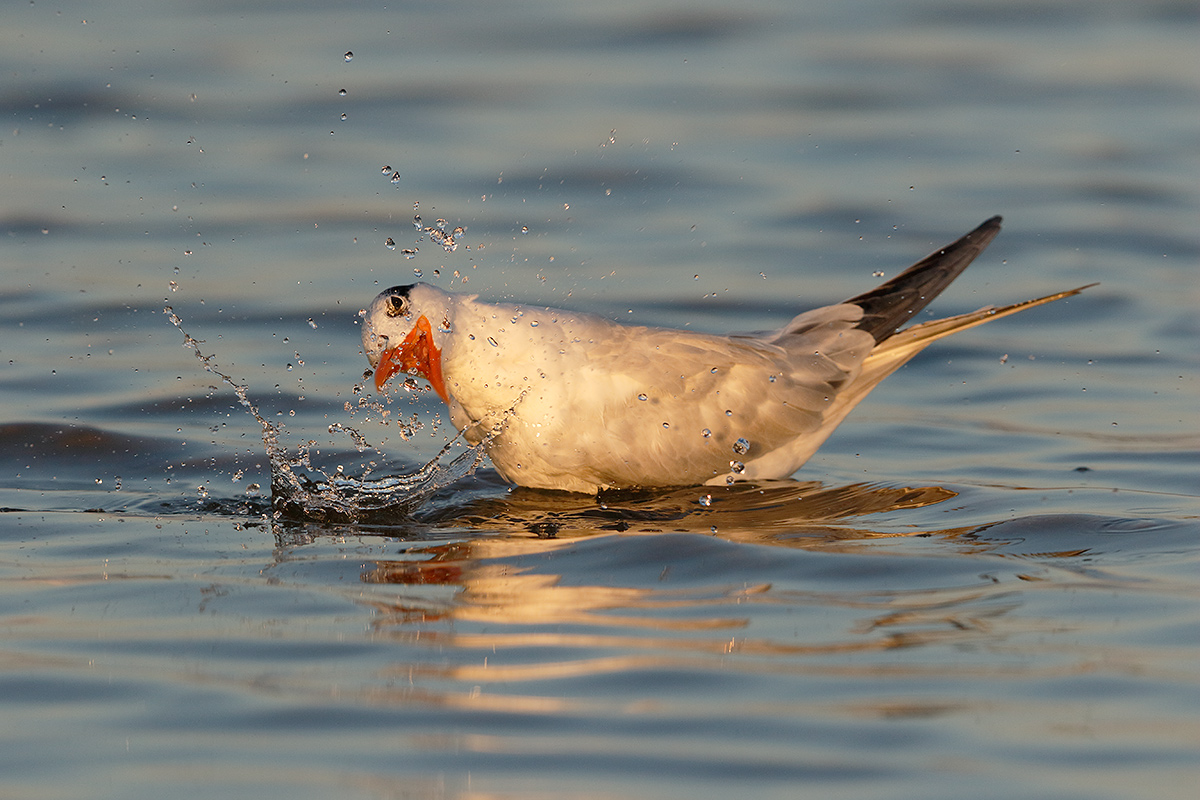What’s Up?
On Thursday I stockpiled two more future blog posts, put the finishing touches on my DPI-SIG program for this Saturday, and worked with Jim in getting mail order product packed up to bring to Naples. Time of course for my easy 3/4 mile swim and my shoulder stretching and exercises.
Please remember that the BAA blog is intended to be interactive; the more folks who comment, the more everyone learns.
Gear Questions and Advice
Too many folks attending IPTs and dozens of the folks whom I see in the field, and on BPN, are–out of ignorance–using the wrong gear, especially when it comes to tripods and more especially, tripod heads… Please know that I am always glad to answer your gear questions via e-mail.
Facebook Live Interview
In conjunction with my Saturday morning speaking gig in Naples (see the details below) I will be doing a Facebook Live Interview/Podcast at 4pm eastern time on Friday, September 9 at 4 p.m. EDT with Peggy Farren of Understand Photography.
All that you need to do to watch the live podcast is head over to the Facebook page here at 4 p.m. on September 9 (2016). If you would like notification via Facebook, you can join the event here.
DPI-SIG Naples Speaking Gig
On the morning of Saturday September 10, I will be presenting “A Bird Photographer’s Story” at 9am in the auditorium at Florida SouthWestern State College located at 7505 Grand Lely Drive, Naples, Florida, 34113. Learn more here. If you live anywhere near SW Florida, I hope to see you there. Be sure to come up for a hug.
The Streak
Today’s blog post marks a totally insane, irrational, illogical, preposterous, absurd, completely ridiculous, unfathomable, silly, incomprehensible, what’s wrong with this guy?, makes-no-sense, 302 days in a row with a new educational blog post. There should be no end in sight until my big South America trip next fall. Or not… As always-–and folks have been doing a really great job recently–-please remember to use our B&H links for your major gear purchases. For best results use one of our many product-specific links; after clicking on one of those you can continue shopping with all subsequent purchases invisibly tracked to BAA. Your doing so is always greatly appreciated. Please remember: web orders only. And please remember also that if you are shopping for items that we carry in the new BAA Online Store (as noted in red at the close of this post below) we would appreciate your business.
|
This image was created at Fort DeSoto in the fall with the Induro/GIT 304L/Mongoose M3.6-mounted Canon EF 600mm f/4L IS II USM lens, Canon Extender EF 1.4X III, and the Canon EOS 7D Mark II DSLR. ISO 400. Evaluative metering at 0: 1/2000 sec. at f/5.6 in Av mode. AWB. One AF point to the left of the center AF point/AI Servo Surround/Rear Button Focus AF as framed was active at the moment of exposure. The selected AF point was just above the bend of the wing. Click here to see the latest version of the Rear Focus Tutorial. Click on the image to see a larger version. Image #1: Royal Tern bathing–head turned away |
Bathing Bird Tips
Once the bird is a decent size in the frame–remember not to get too, too close–and the bird starts dipping its breast in the water and splashing, make lots of images. Today’s images were the best from a 20+ frame sequence. And remember, as we have discussed here before, if you want to get the wing flap, move back to avoid clipping the wings and put the bird in the center of the frame so that you can get the front flap and the rear flap.
When creating today’s images, I decided to get in close and go for the splashing realizing that I would be out of luck for the wing flap. As noted above in the AF portion of the caption, do not try to focus on the bird’s head because the bird’s head is relatively small and may move up or down quickly causing you to lose focus. Better to focus on the neck or the upper back or somewhere in between.
|
This image was created at Fort DeSoto in the fall with the Induro/GIT 304L/Mongoose M3.6-mounted Canon EF 600mm f/4L IS II USM lens, Canon Extender EF 1.4X III, and the Canon EOS 7D Mark II DSLR. ISO 400. Evaluative metering at 0: 1/2000 sec. at f/5.6 in Av mode. AWB. One AF point to the left of the center AF point/AI Servo Surround/Rear Button Focus AF as framed was active at the moment of exposure. The selected AF point was on the bend of the wing. Click here to see the latest version of the Rear Focus Tutorial. Click on the image to see a larger version. Image #2: Royal Tern bathing–splashing with bill open |
Your Pick?
Which is the stronger image, Image #1 or Image #2 (or #3)? Please let us know why you made your choice.
Image #3: This image was created from image #2 |
Monkey Business
Image #3 was created from image #2. Enlarge each image and see if you can spot the difference. If you do, which version do you prefer Image #2 the natural version or Image #3, the Photoshopped version. Why?
|
Fort DeSoto in fall is rife with tame birds. All of the images in this card were created at Fort DeSoto in either late September or early October. I hope that you can join me there this fall one way or another. Click on the composite to enjoy a larger version. |
BIRDS AS ART Fort DeSoto In-the-Field Meet-up Workshop (ITFW): $99
Join me on the morning of October 2, 2016 for 3-hours of photographic instruction at Fort DeSoto Park. Beginners are welcome. Lenses of 300mm or longer are recommended but even those with 70-200s should get to make some nice images. Teleconverters are always a plus.
You will learn the basics of digital exposure and image design, autofocus basics, and how to get close to free and wild birds. We should get to photograph a variety of wading birds, shorebirds, terns, and gulls. This inexpensive morning workshop is designed to give folks a taste of the level and the quality of instruction that is provided on BIRDS AS ART Instructional Photo-tours. I hope to meet you there.
To register please call Jim or Jennifer during weekday business hours with a credit card in hand to pay the nominal registration fee. Your registration fee is non-refundable. You will receive a short e-mail with instructions, gear advice, and meeting place one week before the event.
|
Folks attending the IPT will be in the field early and stay out late to take advantage of sunrise and sunset colors. The good news is that the days are relatively short in early fall. Click on the composite to enjoy a larger version. |
Fort DeSoto Short Notice Fall IPT/September 28 (meet & greet at 2pm followed by our afternoon session) through the full day on October 1, 2016. 3 1/2 DAYs: $1549. Limit 10/Openings: 6. Sunday morning ITFW free to IPT registrants.
Fort DeSoto, located just south of St. Petersburg, FL, is a mecca for migrant shorebirds in fall. There they join dozens of egrets, herons, night-herons, gulls, and terns who winter on the T-shaped peninsula that serves as their wintering grounds. With any luck, we should get to photograph two of Florida’s most desirable shorebird species: Marbled Godwit and the spectacular Long-billed Curlew. Black-bellied Plover and Willet are easy, American Oystercatcher likely. Great Egret, Snowy Egret, Great Blue Heron, and Tricolored Heron are easy as well and we will almost surely come up with a tame Yellow-crowned Night-Heron or two. We should get to do some Brown Pelican flight photography. And Royal, Sandwich, Forster’s, and Caspian Terns will likely provide us with some good flight opportunities as well. Though not guaranteed, Roseate Spoonbill and Wood Stork would not be unexpected.
Folks who sign up for the IPT are welcome to join me as my guest on the ITFW on the Sunday morning following the workshop. See above for details on that.
On this and all other IPTs you will learn basics and fine points of digital exposure and to get the right exposure every time after making a single test exposure, how to approach free and wild birds without disturbing them, to understand and predict bird behavior, to identify and age many species of shorebirds, to spot the good situations, to choose the best perspective, to see and understand the light, to, and to design pleasing images by mastering your camera’s AF system. And you will learn learn how and why to work in Manual mode (even if you’re scared of it).
At brunch (included) we will review my images–folks learn a ton watching me edit–why keep this one and delete that one? If you opt to bring your laptop, we can take a look at a few of your images from the morning session. We will process a few of my images in Photoshop after converting them in DPP. That followed by Instructor Nap Time.
As I already have one signed up for this workshop, it is a go. Hotel info will be e-mailed when you register. The best airport is Tampa (TPA). It is always best if IPT folks stay in the same hotel so if you are interested it would be a good idea to register now and make your hotel reservations as soon as you hear from us. We can, however, coordinate with local folks who opt to stay at home.
Because of the relatively late date, payment is full is due upon registration either by check or credit card. If the former, please e-mail us immediately so that we can save you a spot. If the latter, please call Jim or Jennifer during weekday business hours at 863-692-0906 with a credit card in hand to register. Your registration fee is non-refundable unless the IPT sells out with eight so please check your plans carefully before committing. You will receive a confirmation e-mail with detailed instructions and gear & clothing advice a fairly soon.
Please Remember to use my Affiliate Links and to Visit the New BAA Online Store 🙂
To show your appreciation for my continuing efforts here, we ask, as always, that you get in the habit of using my B&H affiliate links on the right side of the blog for all of your photo and electronics purchases. Please check the availability of all photographic accessories in the New BIRDS AS ART Online Store, especially the Mongoose M3.6 tripod head, Wimberley lens plates, Delkin flash cards and accessories, and LensCoat stuff.
As always, we sell only what I have used, have tested, and can depend on. We will not sell you junk. We know what you need to make creating great images easy and fun. And we are always glad to answer your gear questions via e-mail.
I would of course appreciate your using our B&H affiliate links for all of your major gear, video, and electronic purchases. For the photographic stuff mentioned in the paragraph above we, and for everything else in the new store, we, meaning BAA, would of course greatly appreciate your business. Here is a huge thank you to the many who have been using our links on a regular basis and those who will be visiting the New BIRDS AS ART Online Store as well.
Be sure to like and follow BAA on Facebook by clicking on the logo link upper right. Tanks a stack!
Typos
In all blog posts and Bulletins, feel free to e-mail or to leave a comment regarding any typos or errors. Just be right 🙂



















Hi Artie.
Well it seems most folks like number three image. my preference is for number two.
The only difference is the eye doctoring and while its nice to see the eye revealed with out the membrane covering , the bird would normally have its eye covered when it splashes for protection I think. Showing the tern doing something natural seems to me something a bit less authentic with the eye doctor work included.
David.
Hi DP,
The do not always have the membrane in place when bathing or splashing… As in image #1 🙂
a
I agree that with the eye replaced the image is improved.
I like Image #3 which has corrections to the eye, as well as removal of couple of bright spots.
Here is another vote for number three, although I do like the first image’s splash.
Thanks very much for the detailed tips on photography of bathing birds.
Best wishes.
I like the Monkey Business better, also. When I first scrolled down to it, I thought it was a lot different. Obviously the eye work, which is much better.
But the general sense of the image tells me there has to be more. The first look almost appeared to have less “splash” droplets interfering with the image. Closer look doesn’t show any real changes in this regard, but I can see the Monkey business image appears to have been lightened a little. (See breast and water) This brighter image seems to make the droplets “clearer” or whiter and not interfere with the bird. It seems like a small change, but it made a big “first impact” to me!
I don’t know, maybe I am just crazy and seeing things….
There is a lot more contrast between the birds head and the background water. The “brightening” appears more of a tonal or color adjustment.
The birds definitely “stands out” to me a lot more and the image seems to have more depth.
Just crazy and seeing things 🙂 3 was created from 2 by adding an eye from a totally different frame. As it was a round eye, the Quick Mask was transformed and warped after it was put into place and then of course refined by a Regular Layer Mask. All as detailed in DB and APTATS I & II.
a
Agree with Doug… Monkeying around, you have cleaned up or replaced the eye, much better.
Clearly, the eye was replaced in #3, not sure if anything else. At first glance I would say not. Image #3 would by far be my favorite as it connects with the viewer whereas image #1 does not.
Wilfred
Yeah, but #1 has a pretty cool splash!
a
Monkey business…you replaced the eye. I like the monkey business image better. I like the feeling the tern is looking right at me.
The eye is also the reason why I think #2 is stronger. I’m not sure of the name, but even with the membrane closed, I still like the fact I can see it versus #1 where it gets kind of lost.
Doug
That would be the nictitating membrane.
a